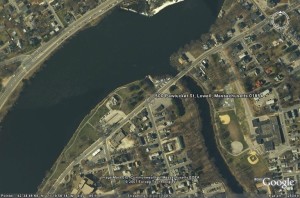Pawtucket Street Corridor Open Forum, Tues. Nov 17
From the UMass Lowell University Relations Office:
“UMass Lowell will host an open public forum on how to improve the Pawtucket Street corridor — which connects the university campuses and their neighborhoods — on Tuesday, Nov. 17 from 6 to 8 p.m. in Moloney Hall at University Crossing, 220 Pawtucket Street.
“The community conversation will explore ways to improve walkability, bicycle accommodations, public safety, development, traffic conditions, community engagement, recreation and more along Pawtucket Street between South Campus and East Campus.
“For more information, please visit www.uml.edu/PawStCorridor
“A major long-range planning goal for UMass Lowell is to shorten both the perceived and real distance between South Campus and the balance of the University’s properties, its “One University – One Campus” 2020 Strategic Plan vision. Doing so will aid in student recruitment and retention by increasing the sense of a unified campus experience. It will also have tremendous impacts on UMass Lowell’s transportation and parking programs and costs if a sense of proximity encourages more university constituents to walk or cycle between the campuses rather than relying on personal vehicles or shuttle buses. Finally, strengthening these connections will almost necessarily also enhance the University’s relationship with the Merrimack River, which will in turn benefit the campus’s and the community’s visual and physical appeal.
“The University has engaged Stantec’s Urban Places Group to assist with the development of recommendations to improve the Pawtucket Street corridor that forms a conduit from East Campus to South Campus. This project is a priority of Student Government Leadership and enjoys financial support from theTheodore Edson Parker Foundation. As a joint initiative with the City of Lowell, this project also supports the “One Campus – One City” priority of the 2020 Strategic Plan.”

This is interesting. What will the folks from Stantec say about UML’s plan to demolish the triple deckers next to the Howe bridge for better views? What will the people of Stantec say about UML buying up houses on Dane St and demolishing them for parking? What will the Stantec group say about building the South Campus Riverview Suites on the FAR edge of campus next to a HUGE surface parking lot?
You can’t expect students to walk or bike when UML subsidizes driving by providing plentiful and cheap parking. It’s hypocritical to promote walking and biking when you’re demolishing the “walkable urban” off-campus housing that begets walking and biking.
UML needs to convince the city to get rid of minimum parking requirements in the urban neighborhoods if it wants to see more walking and biking. This will induce infill development which is necessary in creating a critical mass of people to make walking and biking viable transportation options.
UML needs to get protected bike lines built connecting the campuses. If they’re not protected(physically separated) most people won’t use them. If they don’t connect they aren’t useful and won’t get use(see Father Morissette bike lane).
Most importantly UML needs to lead by example.
Brian, You make some valid points but ” plentiful parking” couldn’t be further from reality. UML is already at critical mass when it comes to parking.
Jason,
UML provides way too much parking. Driving a car in DTL, the Acre and East Pawtucketville should be considered ridiculous because of the small size of the area. The problem is every individual land owner believes they need to have adequate parking, which is contrary to the best interests of the lands owners as a whole. See Tragedy of the Commons. https://en.wikipedia.org/wiki/Tragedy_of_the_commons
Providing ample parking makes sense in Drivable Suburban neighborhoods like Belvidere but not in Walkable Urban neighborhoods like the Acre.
UML should have never put the Riverview Suites on Marginal Street. How much did that foot bridge cost? How much does it cost to bus those kids to the other campuses? How much more congestion is caused by those students driving to the other campuses? How could the surface parking lot on Broadway St be used more intensively?
The negative externalities of putting a dorm in that location far outweigh any benefit from setting a precedent of having a private developer build a public dorm.
If the UML building authority keeps making decisions like this we’re in big trouble.
Are there minutes or a record of this meeting posted somewhere?